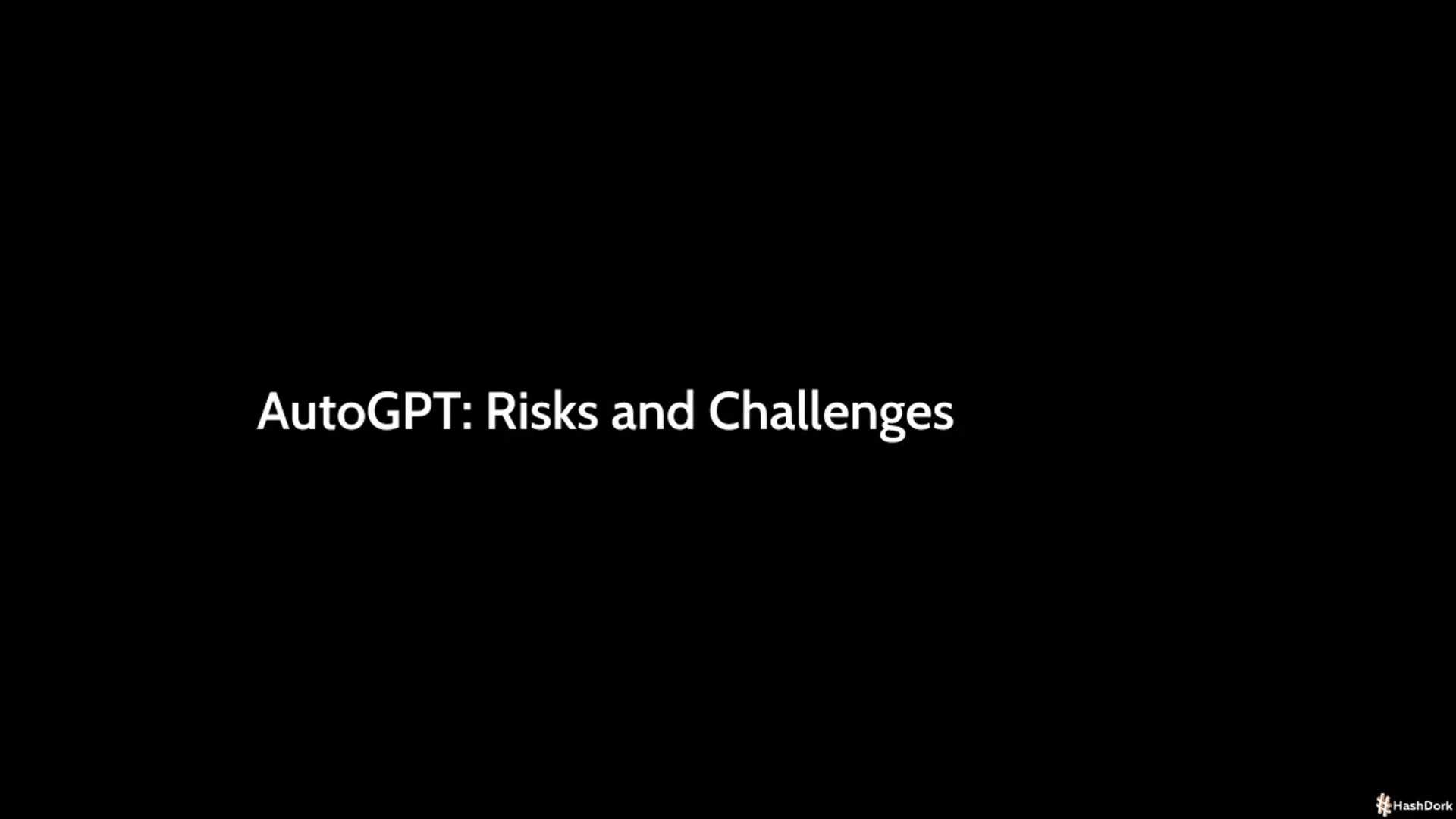AutoGPT: Risks and Challenges - HashDork
AutoGPT is an advanced version of ChatGPT designed to generate text and code. It has the capacity to self-prompt, making it a powerful tool for developers to automate certain aspects of their workflow. While this technology has the potential to change how we approach certain activities, it also has its share of risks and challenges.
Dangers of AutoGPT
Using AutoGPT as an independent AI agent might be risky for safety and security. There is a chance that Auto-GPT will make judgments that are not in the user’s or others’ best interests since it can function without human input. It may also be sensitive to hacking and cyberattacks, endangering the security of the user’s private information. Malicious individuals may likely control it to carry out nasty goals, making it a dangerous tool.
AutoGPT has the potential to substitute human labor in many sectors, leading to job displacement and unemployment. Although some experts believe that AutoGPT may lead to the creation of new work possibilities, it is still being determined whether these opportunities will be sufficient to compensate for the job losses brought on by the replacement of human labor.
An important issue with AutoGPT is the possibility of discrimination and bias. It bases its judgments on the data it is trained on, and if that data is biased or discriminatory, it may use the same biases and practices in its decision-making. For people and groups that are already marginalized, this might result in unfair or unjust results. It may make discriminatory choices, such as restricting access to resources or opportunities if it is trained on partial data that is biased against certain groups.
The quantity of data that AutoGPT gathers and analyzes is increasing exponentially as they develop. However, the power to collect and handle data does give rise to legitimate privacy concerns. AutoGPT may gather sensitive information that may be misused or subject to data breaches.
Challenges of AutoGPT
AutoGPT can produce material with astounding accuracy and fluency. However, creating precise standards for responsibility and accountability is critical as we continue to include AutoGPT in our everyday lives. We must examine the ethical ramifications of assigning such duties to computers and the advantages and disadvantages of our choices. These issues are particularly relevant to the healthcare sector, as AutoGPT may play a significant role in making important choices about patient care.
While employing AutoGPT might improve productivity and simplify procedures, it can also result in a loss of human interaction. We must consider the value of human contact as we depend increasingly on it and ensure we do not forgo it in favor of efficiency.
Conclusion
The development and implementation of AutoGPT have significant dangers and difficulties. We must address potential problems, risks, and challenges to guarantee its safe and ethical usage. AI developers can actively reduce these risks and issues by carefully creating and testing them, considering their moral and social ramifications, and putting rules and policies in place to ensure their safe deployment. By tackling these issues, we can realize the full potential of AI while reducing harm.




















